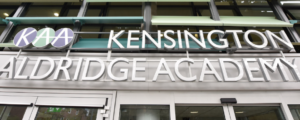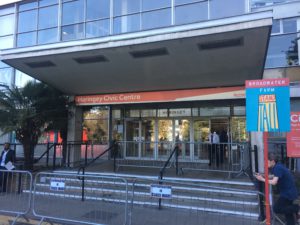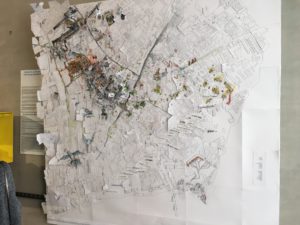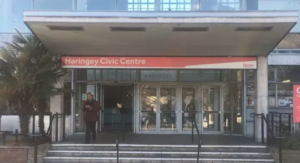The credibility of the new and very different Labour administration running Haringey since the 3 May elections depends on its demonstrating a high degree of competence, both in the eyes of local residents and of fellow Labour politicians across the city. Achieving this has not become any easier thanks to remarks made by a prominent member of the council’s new cabinet that have caused two Labour councillors in Southwark to accuse him of telling lies.
Noah Tucker, Haringey’s recently appointed cabinet member for corporate services and insourcing, said at a meeting of Haringey cabinet last night that he believed “Southwark are intending to replace their council blocks by regenerated private blocks” and contrasted this with what he said will be Haringey’s approach to replacing any of its council dwellings that might be demolished by “one-for-one council accommodation”.
Tucker’s comments, which were made at a meeting of the Haringey cabinet last night, were described on Twitter as “A lie. Pure and simple” by Southwark’s leader Peter John while its cabinet member for housing management and modernisation, Stephanie Cryan, described Tucker’s words as “A complete disregard of protocol not to mention a statement that has no bearing on the truth”.

Cryan has now written to Tucker, who she is due to see at a meeting tomorrow, demanding to know “why you felt the need to quite frankly lie in public” about Southwark’s approach, saying that it is “absolutely not the case” that Southwark intends to replace tower blocks on the Ledbury estate in Peckham with private blocks and that it is a matter of public record that the borough’s preferred option is to “strengthen and refurbish” the existing Ledbury housing.

The intervention by Tucker was filmed and put online by the Ledbury Action Group, which describes its aim as supporting Ledbury estate residents and facilitating their involvement in the council’s consultation of them, and brought to Cryan’s attention. She has asked Tucker to “make a public apology and retract your comments before any more damage is caused”. Her email has been copied to Haringey leader Joseph Ejiofor.
Tucker’s comparison with Southwark was made during a discussion about Haringey’s “preferred option” of demolishing two housing blocks on its Broadwater Farm estate in Tottenham due to urgent safety concerns. A deputation led by Broadwater Farm residents association secretary Jacob Secker had raised a number of concerns about the choice and type of temporary housing those living in the blocks would be entitled to, their “right of return” to the estate and how their wishes for its future would be ascertained and acted on.
A lobby of the cabinet meeting was supported by the Ledbury group and by Stop HDV, a Haringey pressure group comprising members of Momentum and parties other than Labour which played a leading role in a successful campaign to get rid of councillors who had supported plans by Haringey’s previous Labour administration to form a joint venture company with international regeneration specialists Lendlease in order to redevelop a range of council property, including the civic centre, council offices and housing estates. Broadwater Farm had been earmarked for redevelopment some time in the future.
Secker demanded that residents should be balloted over whether the blocks should be left standing and strengthened or knocked down and replaced. and that their wishes should be acted on. He also sought guarantees that when they return to the estate their rents will be “exactly” the same and insisted that temporary accommodation should not included hotels or bed and breakfast establishment, saying “it’s not going to happen”.
A council officer told the meeting that in anticipation of the residents having to move out at short notice, around 84 council dwellings elsewhere had been set aside for the 89 households living in one of the two blocks.
Requesting that “two properly costed options” be provided prior to any consultation, Secker also asked “Where is the funding to provide this public housing?”
The new Labour group elected on 3 May, which is led by Momentum members, ran on a manifesto which said “we do not believe that the HDV [Haringey Development Vehicle joint venture] provides the answer” to delivering “new, decent, genuinely affordable housing” in the borough and that “we do not intend to progress with it”. The manifesto promised to “deliver at least a thousand new council homes at council rents by 2022” by other means. The current waiting list for council housing in Haringey stands at around 9,000 households.
A report for the cabinet found that the two blocks could be made safe at a total estimated cost of £33.6m, which have to be met entirely from council funds, and that rebuilding them could cost between £32 and £54, though this option would produce better quality homes and probably be eligible for external grant funding, lessening the cost to the council. London Mayor Sadiq Khan has recently allocated £4m to Haringey to help finance it building homes at London Affordable Rent levels, which can be close to conventional council rent levels. Some of this could be used towards replacing the two Broadwater Farm blocks.
Emine Ibrahim, Haringey’s deputy leader and its cabinet member for housing and estate renewal, whose responsibilities include Broadwater Farm resident engagement, promised to go through a number of issues Secker and his colleagues had raised and said she was “looking into the legal side” of holding a ballot of residents. In her response to the report on the blocks she wrote that the council has “a duty to maintain the long-term health of the council’s finances”.
Ibrahim is a national vice chair of Momentum and Haringey’s leader Joseph Ejiofor sits on its national co-ordinating body. Noah Tucker became a councillor at a by-election in October 2016. He and his brother Calvin Tucker previously ran a Far Left website called 21st Century Socialism, which they have now taken down. Tucker’s sister, Pilgrim Tucker, is a housing campaigner who has been prominent in activism related to the Grenfell fire.





 There has been far too much
There has been far too much 



 Why not take a look for yourself? The show runs until 7 July.
Why not take a look for yourself? The show runs until 7 July.
 Shaheen’s
Shaheen’s  If Lennox, a Momentumite like Shaheen, is to prevail in this clash of Corbynites, she will probably owe a lot to shadow chancellor John McDonnell, who has endorsed her.
If Lennox, a Momentumite like Shaheen, is to prevail in this clash of Corbynites, she will probably owe a lot to shadow chancellor John McDonnell, who has endorsed her. Naturally, Lennox is making the most of her connections with Labour’s national top brass, using Twitter to praise Corbyn’s recent activities in Syria and elsewhere and using a photo of herself attending the recent Labour Live event in Tottenham to accompany her
Naturally, Lennox is making the most of her connections with Labour’s national top brass, using Twitter to praise Corbyn’s recent activities in Syria and elsewhere and using a photo of herself attending the recent Labour Live event in Tottenham to accompany her 


